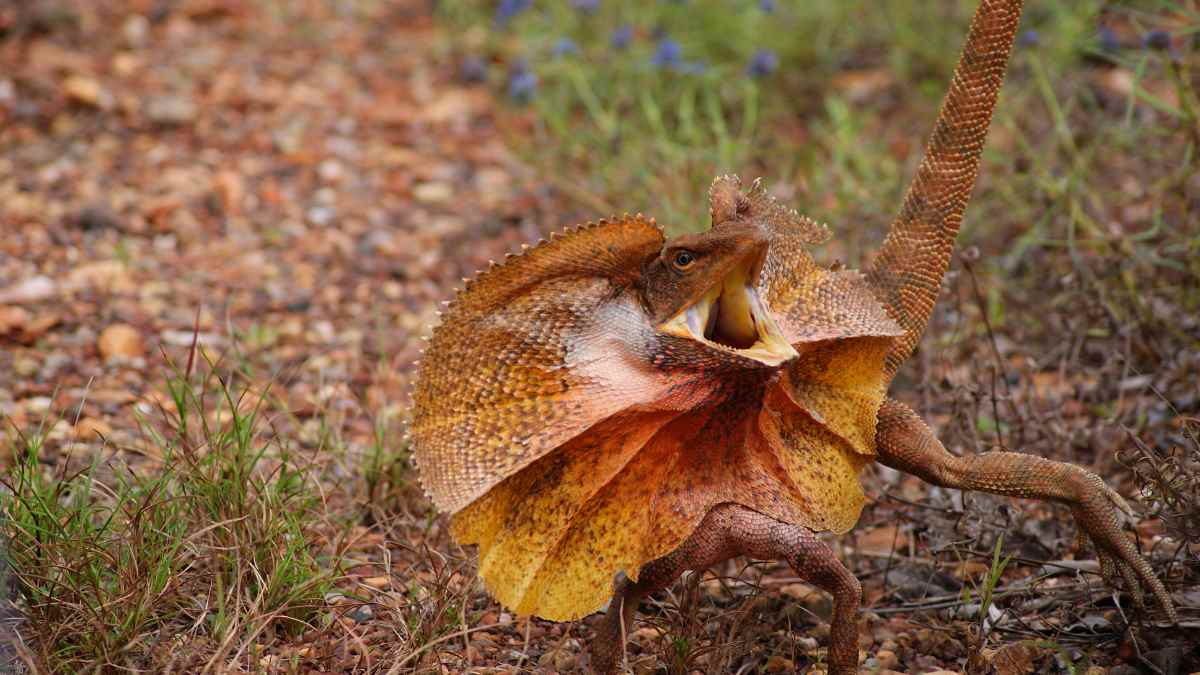Lizards: they’re often thought of as silent, scaly creatures, content to bask in the sun and catch the occasional bug. But did you know that some lizards can actually make noises?
It’s true!
While not all lizards are vocal, some species are known to make a variety of sounds for different purposes.
But what kinds of noises do lizards make, you might wonder? And how do they do it?
Well, hold onto your hats because we’re about to delve into the exciting world of lizard noises. From calls to attract mates to defensive or aggressive noises, lizards have a variety of ways to make their presence known.
So let’s dive in and learn more about these scaly sound-makers!
Do Lizards Make Noises
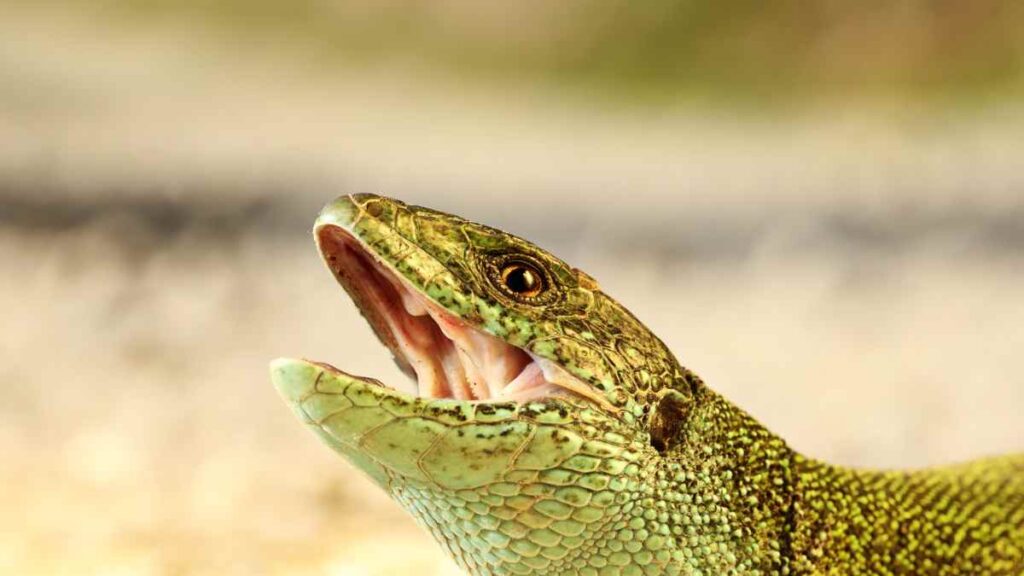
Do lizards make noises? You bet they do!
While not all lizards are vocal, some species are known to make a variety of sounds for different purposes.
-

Beaded Dragon Fan Exclusive: ‘Original Hipster’ T-Shirt – Wear Your Unique Style with Pride – Unisex t-shirt
£13.00 – £20.50 Select options This product has multiple variants. The options may be chosen on the product page -

Chinese Water Dragon Aquatic Mastery Tee: Dive into Elegance with Our Exclusive Reptile Enthusiast Shirt – Unisex t-shirt
£13.00 – £20.50 Select options This product has multiple variants. The options may be chosen on the product page
For example, chameleons and anoles might make calls or chirps to attract mates, horned lizards and geckos might make hissing or growling sounds as a defense mechanism or as a sign of aggression, and skinks might make high-pitched cries or yelps when they’re feeling threatened.
But how do lizards make these noises, you might wonder?
Some lizards, such as chameleons, have vocal cords that allow them to make vocalizations. Others, such as geckos, may make noises by vibrating their bodies or rubbing their scales together. And some lizards, such as horned lizards, can make hissing noises by exhaling air through their nostrils.
More on that as we delve deeper into the article!
Types of Lizard Noises
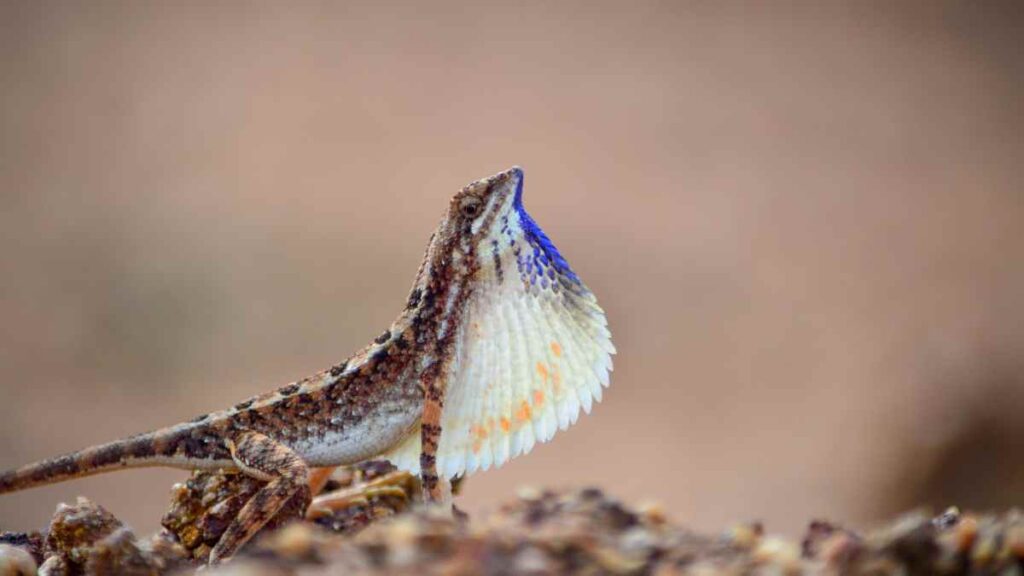
Lizard noises: who knew these scaly critters had so much to say? It’s true while not all lizards are vocal, some species are known to make a variety of sounds for different purposes. Here are just a few examples of the different types of noises that lizards are capable of making:
- Calls to attract mates: Imagine you’re a male chameleon trying to catch the attention of a female. How do you do it? You could try flashing your bright colors, or perhaps you could try serenading her with a series of chirps and clicks. Yes, that’s right – some lizards, such as chameleons and anoles, make calls or chirps to attract potential mates. Talk about a love song!
- Defensive or aggressive noises: If you’re a horned lizard or a gecko, you may not have the most impressive size or strength. But you’ve got another trick up your sleeve – the ability to make some seriously intimidating noises. These lizards can make hissing or growling sounds as a defense mechanism to ward off predators or as a sign of aggression towards other lizards. Watch out because these little guys mean business!
- Distress calls: Sometimes, lizards can find themselves in sticky situations – maybe they’re being chased by a predator or feeling threatened in some other way. When this happens, some lizards, such as skinks, may make high-pitched cries or yelps to signal their distress. So it’s a bit like a reptilian version of a cry for help.
So next time you see a lizard, don’t be surprised if it has a little something to say!
How Lizards Make Noises
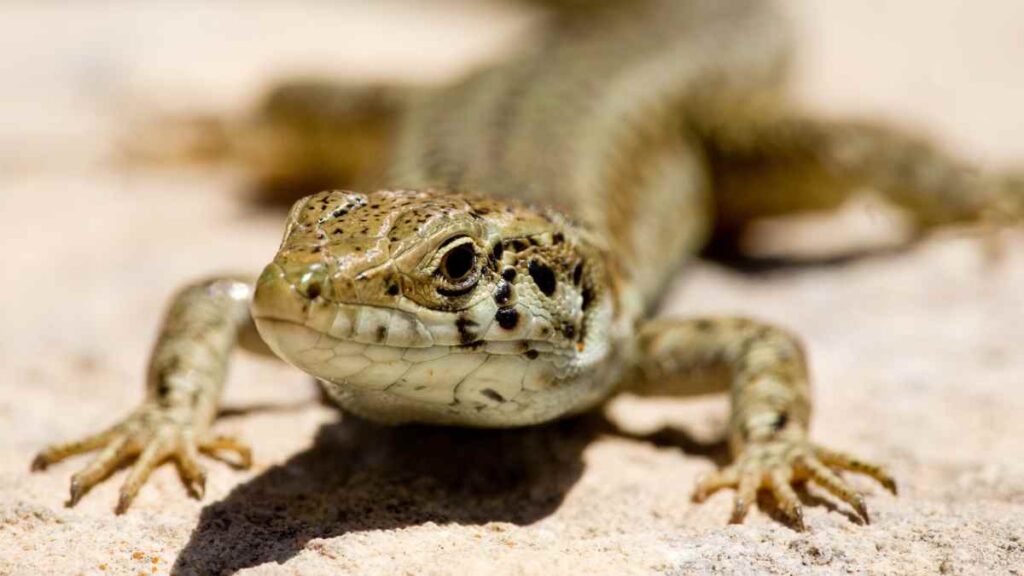
Have you ever heard a lizard make a noise and wondered, “How on earth are they doing that?” Well, wonder no more! Here are a few ways that lizards can make all sorts of interesting sounds:
- Vocal cords: Some lizards, such as chameleons, have vocal cords that allow them to make vocalizations. These specialized structures in the larynx can vibrate to produce sound, much like in humans. So the next time you hear a chameleon making a series of chirps or clicks, you’ll know it’s using its vocal cords to do it.
- Body movements: Other lizards, such as geckos, may make noises by vibrating their bodies or rubbing their scales together. This can create various sounds, ranging from clicks and chirps to hisses and growls. It’s a bit like a one-lizard percussion band!
- Expelling air: Some lizards, such as horned lizards, can make hissing noises by exhaling air through their nostrils. This is usually a defensive or aggressive behavior meant to ward off predators or signal dominance to other lizards. So the next time you hear a horned lizard hissing at you, remember – it might be angry and trying to protect itself! It is best to back away.
Who knew lizards had such a wide range of vocal abilities? It just shows that these scaly creatures are more complex than we might think.
The Importance of Lizard Noises
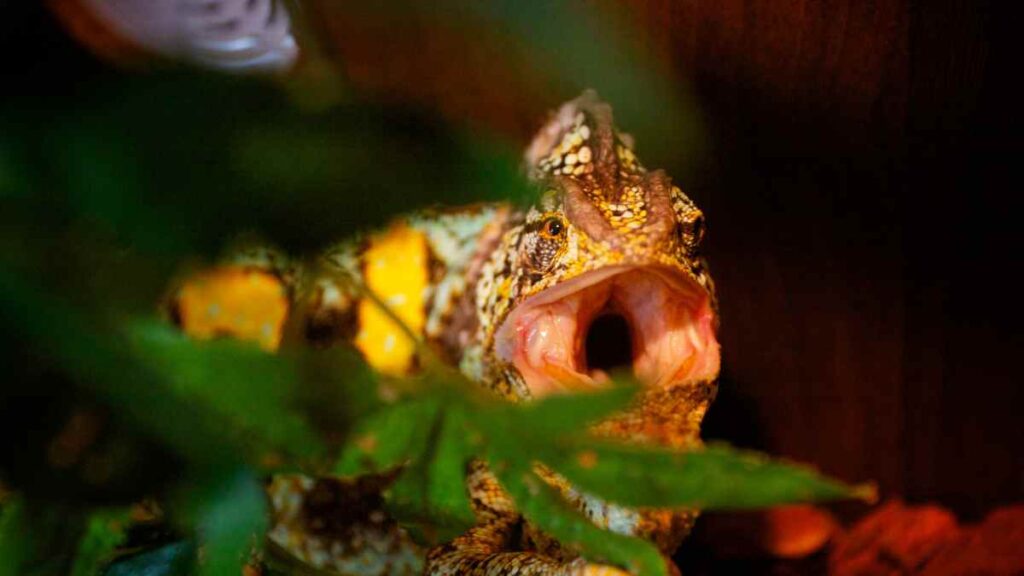
Lizard noises: they’re not just random noises; they actually serve a purpose! Believe it or not, these sounds are important for communication and survival in the animal kingdom. Here are a few reasons why lizard noises are so important:
- Communication: Lizard noises serve as a means of communication between individuals of the same species. For example, a male chameleon might use its vocalizations to attract a female, or a horned lizard might use hissing noises to signal aggression to another male. These sounds allow lizards to communicate with each other and convey important information.
- Survival: Making noise can also help lizards in their quest for survival. For example, attracting a mate and reproducing is a vital part of any animal’s survival strategy, and lizard noises can help with that. Additionally, making defensive or aggressive noises can help lizards ward off predators and protect themselves. And if a lizard finds itself in a dangerous situation, making a distress call can help to signal danger to others and possibly even attract help.
How do the frequencies of lizard noises compare to human hearing capabilities?
Lizard noises vary widely across species, with some producing sounds that are well within the human audible range, while others might emit frequencies that are too high or too low for humans to hear. Generally, the sounds made for communication purposes, such as mating calls, are audible to humans.
No lizard species are known to use echolocation like bats. Lizards primarily rely on visual cues, body language, and sound for communication, mating, and territorial defense, rather than for navigation.
How do environmental factors like temperature and humidity affect lizard vocalizations?
Temperature and humidity can significantly affect lizard vocalizations, as these factors influence the lizard’s metabolism and activity levels. In colder temperatures, lizards may be less active and produce fewer sounds, while warmer conditions can increase their vocal activity. Humidity might also impact the sound’s propagation and the lizard’s hydration state, affecting its ability to vocalize.
Conclusion
So there you have it: lizards can and do make various noises for different purposes, including attracting mates, defending themselves, and signaling danger.
It’s just one more example of the incredible diversity of behaviors and communication methods in the animal kingdom.
Who knows what other secrets these scaly critters are hiding?
One thing’s for sure – lizards are definitely more vocal than we might think!

